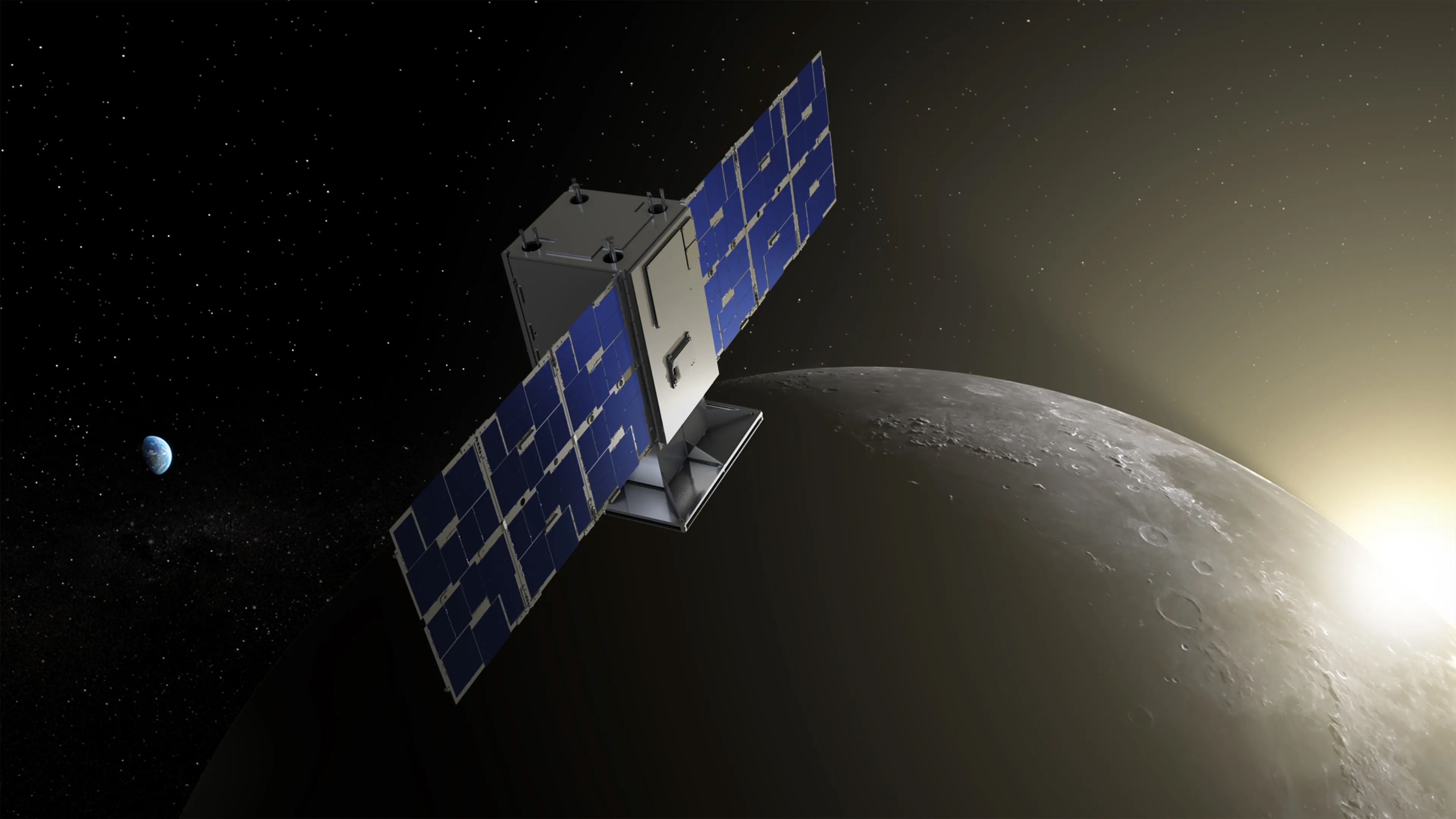NASA's tiny CAPSTONE probe celebrates 450 days in orbit around the moon
"The CAPSTONE mission is continuing to deliver valuable data and experience that will inform future exploration missions."

NASA's experimental CAPSTONE cubesat mission has been circling the moon for more than 450 days, testing a unique orbit that will be used for NASA's future moon-orbiting space station. According to the cubesat's maker, the mission is still going strong and has long since completed all its primary goals.
NASA launched CAPSTONE, short for the Cislunar Autonomous Positioning System Technology Operations and Navigation Experiment, on June 28, 2022. Less than five months later, the cubesat, about as big as a microwave oven, reached the moon and entered a near rectilinear halo orbit (NRHO), an elliptical path around Earth's natural companion with the closest point at 930 miles (1,500 kilometers) and the farthest point at 43,000 miles (70,000 km) from the moon's surface. The mission's goal was to test a new navigational system and gather data about the forces the future moon-orbiting station will experience while following this path.
CAPSTONE is the first spacecraft ever to travel in an NRHO. Its manufacturer, Florida-based company Terran Orbital, released a statement on Feb. 22 celebrating the mission's 450 days operating near the moon, noting that the spacecraft has completed all its main tasks and is now on an "enhanced mission" that will last until at least May this year.
Related: NASA's tiny CAPSTONE probe snaps 1st photo of the moon, begins extended mission
"This enhanced mission is a testament to the exceptional capabilities of our platform and the dedication of our talented team," Marc Bell, co-founder and CEO of Terran Orbital, said in the statement.
CAPSTONE is a partnership between Terran Orbital, Colorado-based technology company Advanced Space and NASA, whose Artemis program aims to put humans back on the moon and establish a permanent human presence on its surface.
"The CAPSTONE mission is continuing to deliver valuable data and experience that will inform future exploration missions," Bradley Cheetham, CEO of Advanced Space, which operates the cubesat, said in the statement.
Get the Space.com Newsletter
Breaking space news, the latest updates on rocket launches, skywatching events and more!
In a separate statement released in early February, Advanced Space announced that CAPSTONE recently set its new "uptime" record, meaning its computer kept operating independently of ground control for 112 consecutive days.
The spacecraft, which reached the moon shortly before the launch of NASA's Artemis 1 test mission to lunar orbit, maintains its position by communicating with NASA's Lunar Reconnaissance Orbiter via radio crosslinks. The two spacecraft, however, are in touch only during specific windows. The last such communication opportunity in early January lasted 66 minutes and enabled the two spacecraft to exchange a record amount of data, Advanced Space said in the statement.
CAPSTONE's communication system is designed so that in the future it can talk to multiple users, allowing other moon-orbiting spacecraft to maintain their position independently of Earth.
NRHO paths, like the one that CAPSTONE occupies, are unique, as they are partially influenced by the gravity of the moon and partially by that of Earth. NASA chose this orbit for its future Lunar Gateway space station because calculations suggested it should be very stable and have low station-keeping requirements. Moreover, the NRHO also provides an almost constant view of Earth and crosses both poles, which is convenient for dispatching landers to the planned Artemis surface outpost near the moon's south pole.
Advanced Space said the spacecraft has enough fuel to continue "extended operations" beyond May 2024, when its "enhanced mission" ends.
Join our Space Forums to keep talking space on the latest missions, night sky and more! And if you have a news tip, correction or comment, let us know at: community@space.com.

Tereza is a London-based science and technology journalist, aspiring fiction writer and amateur gymnast. Originally from Prague, the Czech Republic, she spent the first seven years of her career working as a reporter, script-writer and presenter for various TV programmes of the Czech Public Service Television. She later took a career break to pursue further education and added a Master's in Science from the International Space University, France, to her Bachelor's in Journalism and Master's in Cultural Anthropology from Prague's Charles University. She worked as a reporter at the Engineering and Technology magazine, freelanced for a range of publications including Live Science, Space.com, Professional Engineering, Via Satellite and Space News and served as a maternity cover science editor at the European Space Agency.









